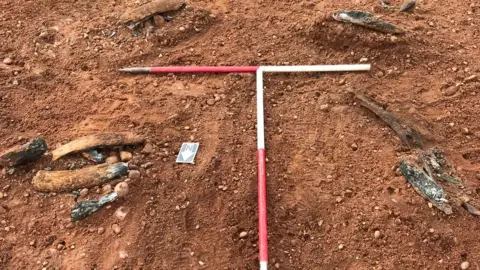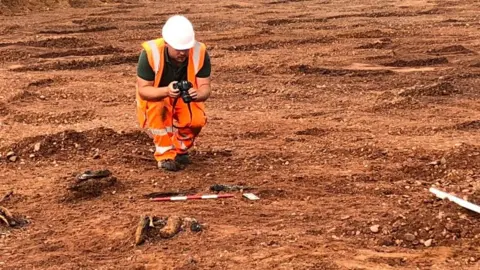Woolly mammoth 'tusk' uncovered at Staffordshire quarry
 Worcestershire County Council
Worcestershire County CouncilFragments believed to have come from a woolly mammoth have been uncovered at a quarry.
Worcestershire Archive and Archaeology Service said the remains, believed to include a tusk, were found and excavated in Staffordshire.
It is one of a number of finds of its kind from across the West Midlands, with another made at the same site a month ago.
The discovery will be analysed before going on display this weekend.
Rob Hedge, from the service, said the items, discovered on Wednesday, were believed to include parts of a woolly mammoth, including the tusk, and possibly other species.
It comes a month after a find at the same quarry in May.
 Worcestershire County Council
Worcestershire County CouncilMr Hedge said: "There have been lots of discoveries from the Ice Age all over the West Midlands.
"There have actually been a lot of really interesting finds made here and it is not very well known about."
The service would not disclose exactly where the remains were found.
However, the information will be released when the items are on view to the public as part of the Lost Landscapes of Worcestershire exhibition, which starts on Saturday.
Allow X content?
Mr Hedge said finds were often made on quarries, where there may be an archaeologist on site who can examine and record items before they are taken back to the office for further analysis.
Mostly the archaeological discoveries do not date back as far as the Ice Age, but occasionally discoveries of this nature are made in deeper parts, he added.
He believed they are likely to date from the Devensian period, the final bit of the last Ice Age between about 100,000 and 12,000 years ago.
 Worcestershire County Council
Worcestershire County Council